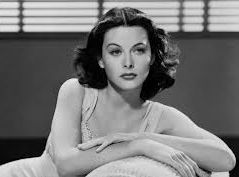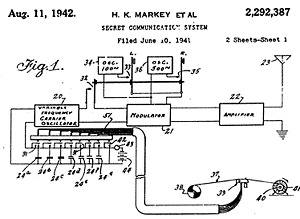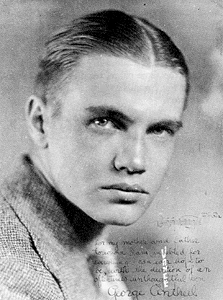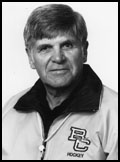A Beginning in Sex and Scandal
 Her early life was scandalous. She appeared naked, on the movie screen, running through the woods and swimming in a lake, the first woman ever shown in the altogether.
Her early life was scandalous. She appeared naked, on the movie screen, running through the woods and swimming in a lake, the first woman ever shown in the altogether.
That was in Ecstasy, made in Czechoslovakia in 1933. She also acted out sexual climax, writhing and moaning in a bliss that would have made Meg Ryan blush. Her films were luscious cinematic forbidden fruit, banned almost everywhere. Benito Mussolini owned and treasured a personal copy of Ecstasy.
And she was beautiful. Hedwig Kiesler had a perfect face, raven hair, and a slim delicate figure. Men lusted for her. The first man to have her – that’s not the right word, nobody ever truly had her – was Friedrich Mandl, the first of her six husbands.
He was one of the richest men is Austria. She was his trophy wife. His company, Hirtenberger Patronenfabrik, sold ammunition and was the one of the leading arms makers in Europe. He was a Fascist sympathizer, supplying the war machines of anyone who’d buy his wares.
Mandl showcased Hedwig at dinners and banquets with the likes of Mussolini and Adolf Hitler. She acted the part of a brainless beauty. She often said that the secret of glamor was to “stand there and look stupid.” So she did. It was a superb performance, maybe the best acting job of her career.
Hedwig Kiesler was a genius. Daughter of a Jewish banker, she had excelled in school, especially in math and science. She was born in Vienna on November 9, 1914. She quit school at 16 to study acting. In the late 1920’s Hedy was discovered and brought to Berlin by director and acting instructor Max Reinhardt. Following her training in the theater, she returned to Vienna and began to work in the film industry. She married Mandl, who was 30 years older than she, in 1933.
Eavesdropping Inside the Third Reich
When her husband and the evil dictators sat around talking shop, she sat there, looked pretty, and took it all in. She knew what they were talking about, and she knew what they were up to.
A favorite topic of Adolf Hitler was military technology, especially of the type that could control missiles and torpedoes by radio. Wireless control of weapons would be a huge jump from the hard-wired methods then in use. Wireless did come into use during the 1940s, by both Allies and Axis forces. But it was single-frequency radio, easy to monitor, detect, and jam.
According to one account, Mandl and Hitler engaged in a drunken menage à trois after a dinner party. Mandl was desperate to cement a big arms deal. The third party in the threesome was his gorgeous wife. That story is from a widely-panned book, What Almost Happened to Hedy Lamarr, and its truth is in doubt.
Even if it is true, that may or may not have been the final straw for Kiesler. As a Jew, she came to hate Nazis. She despised her husband’s business ambitions, and she did not share her thoughts about science and technology. If anything, she would share her information with the Allies who were fighting against the Nazis.
The radio-controlled guidance system for torpedoes that she heard discussed never got into production because it was too susceptible to disruption. Somewhere along the way she got the idea of distributing the guidance signal over several frequencies. This would protect it from enemy jamming. But she still had to figure out how to synchronize the transmitter and receiver. The solution would come to her later.
Mandl came to know how she felt about him, and he kept her locked up in his castle, Schloss Schwarzenau. He had also forbade her to pursue acting, and tried to buy up all copies of Ecstasy.
In 1937, Hedwig escaped by drugging her maid and sneaking out of the castle wearing the maid’s clothes. She sold her jewelry to finance a trip to London.
Hedwig made it out of Austria just in time. Hitler annexed the country in 1938 and took over Mandl’s business. Mandl was half-Jewish, so being an arms supplier to the Third Reich was no help to him. He had to flee to Argentina, where he eventually became an adviser to Juan Peron.
Into the Movies
In London, Kiesler arranged a meeting with the Hollywood film titan Louis B. Mayer. He knew of her, of course, and he too was captivated by her beauty. On the voyage to America she signed a long-term contract and became one of MGM’s biggest stars of the time.
She was in more than 20 films, costarring with Clark Gable, Judy Garland, Bob Hope, Paul Henreid, James Stewart, Spencer Tracy and others. Algiers, White Cargo, and Samson and Delilah were among her biggest screen successes. Unfortunately for Hedy, she turned down the lead in both Casablanca and Gaslight.
She made and spent, by some accounts, at least $30 million. The mansion used in filming The Sound of Music in 1965 belonged to her at the time. Her film career went into decline after Samson and Delilah in 1949.
Film fame and the showbiz scene didn’t do it all for Hedy Lamarr. She didn’t care much for the world of glitz, parties, and paparazzi. She wanted more. She wanted use her money, power, and formidable intellect to defeat the Nazis. She found an ally in composer/musician George Antheil.
Her Only True Partner
Antheil was an interesting individual too. His 1945 autobiography, The Bad Boy of Music, was a best seller. He was born in New Jersey in 1900 and showed promise as a musician and composer. He lived in Paris, and then in Berlin, from 1923 to 1933 when he returned to America. He also wrote books and a nationally syndicated advice column, wrote regularly for Music World and Esquire, and was a major figure in American ballet.
Antheil made his way to Hollywood to write musical scores for movies. He thought that the movie industry was hostile to modern music, however, and had little personal regard for Hollywood. He also saw Nazism for what it was. One of his magazine articles, “The Shape of the War to Come,” accurately predicted both the outbreak and eventual outcome of World War II. He joined up with Oscar Hammerstein and others in the Hollywood Anti-Nazi League.
Antheil and Lamarr were ideological soul mates. But that’s not what brought them together initially. He also claimed to be an expert on female endocrinology. He had written a series of articles about how to determine the availability of women based on “glandular effects” on their appearance. They had titles like “The Glandbook for the Questing Male” and another on “glandular criminology” titled “Every Man His Own Detective.”
Lamarr first sought out Antheil for help in “augmenting her upper torso,” as one web site nicely puts it. She had him over for dinner after scrawling her phone number in lipstick on his windshield after leaving a party. He suggested glandular extracts of some sort, but their talk evidently turned to technology and how it might be used to fight Hitler. Perhaps technology talk was unavoidable; she had a drafting table in her living room.
Antheil’s most famous musical work was the thoroughly avant-garde Ballet Mechanique. The work’s orchestration first called for 16 player pianos, along with two regular pianos, xylophones, electric bells, propellers, siren, and bass drums. It was hard to keep so many player pianos synchronized, so he scaled it back to a single set of piano rolls and augmented the regular pianos with several additional instruments. It produced an entirely new brand of stereophonic sound.
The Technological Breakthrough and Patent
Antheil’s expertise with player pianos was just what Hedy Lamarr needed. She wanted to design a system of controlling torpedoes that would also be hard or impossible for the enemy to jam. Single-frequency radio control was vulnerable to jamming, as she knew. If they could find a way to “change the channel” at random intervals, the torpedoes could make their way to the target.
Hedy incorporated Antheil’s method for synchronizing his player pianos. The coordination of frequency signals was done with paper player-piano rolls. Then she was able to synchronize the frequency changes between a weapon’s receiver and its transmitter. This “frequency hopping” used a piano roll to make random changes over 88 frequencies. It was intended to make radio-guided torpedoes harder for enemies to detect or jam.
On August 11, 1942, U.S. Patent No. 2,292,387 for a “Secret Communication  System” was granted to Antheil and Hedy Kiesler Markey, which was Kiesler’s married name at the time. They turned the patent rights over to the U.S. Navy, and unfortunately they never made any money from their brilliant invention.
System” was granted to Antheil and Hedy Kiesler Markey, which was Kiesler’s married name at the time. They turned the patent rights over to the U.S. Navy, and unfortunately they never made any money from their brilliant invention.
The Navy did not end up building radio-controlled torpedoes. They might not have taken the idea seriously; after all, it came from a gorgeous woman and a flaky musician. There were also some big additional hurdles to overcome before such a system could be used with waterborne ordnance. The Navy did ask her to use her good looks to sell War Bonds, though. She agreed, and bestowed kisses for a purchase price of $50,000.
But the Navy did use Lamarr’s system beginning in 1950. It first controlled sonobuoys, the floating listening posts that detect submarines. In the sixties, it was used for secure ship-to-ship communications during the Bay of Pigs invasion and the Cuban missile crisis. Reconnaissance drones used in Vietnam also employed frequency hopping.
Every time you dial your cell phone, take a call on it, or log onto the Internet, you can thank Hedy Lamarr. Her invention, conceived to fight the Nazis and now called “spread spectrum,” is the foundation of all wireless communication.
“Long-term evolution,” or “LTE,” technology, is just an extension of Hedy and George’s frequency-hopping. Spread spectrum is also the key element in anti-jamming devices used in the government’s $25 billion Milstar system. Milstar satellites control all the intercontinental missiles in U.S. weapons arsenal.
Dozens of “citing patents” owned by the likes of Sony, AT&T, and Seagate now appear on the Patent Office page for Hedy Lamarr’s Secret Communication System. The latest of them was filed in 2009.
After the Glamor Fled
The last half of this remarkable woman’s life was not happy. True, the Electronic Frontier Foundation gave Lamarr her a long-overdue award for her work in 1996. Her son Anthony Loder accepted it for her because she no longer appeared in public. She also received the prestigious Austrian Academy of Science Award from her native country.
All six of Hedy’s marriages ended in divorce. Some of her quotes about her experiences there are revealing:
“I must quit marrying men who feel inferior to me. Somewhere there must be a man who could be my husband and not feel inferior. I need a superior inferior man.”
“Perhaps my problem in marriage–and it is the problem of many women–was to want both intimacy and independence. It is a difficult line to walk, yet both needs are important to a marriage.”
“I have not been that wise. Health I have taken for granted. Love I have demanded, perhaps too much and too often. As for money, I have only realized its true worth when I didn’t have it.”
Lamarr’s last movie appearance was in 1958. Her eye-candy roles had never required much acting anyway. She was usually cast as the mysterious and ravishing femme fatale. She’d often been called the most beautiful woman in the world. But when other, younger stars came along, she had fewer and fewer opportunities. She underwent plastic surgery that didn’t help. She had money problems and was twice arrested for shoplifting.
She also launched a number of lawsuits. These included going after Mel Brooks for his silly “That’s Hedley Lamarr!” in Blazing Saddles, and suing Corel Draw for using her image on packages. Both suits were settled out of court. She also wrote an autobiography, Ecstasy and Me, in the 1960s, and ended up suing the publisher.
Hedy lived her final years in seclusion in Florida, her eyesight failing and out of touch with the world that her scientific genius has helped immeasurably. She died in 2000 and was cremated. At her request, her ashes were scattered in the Vienna Woods of her native land.
I Wish I’d Known Her
Anthony Loder once said that his mother never got the chance to grow old gracefully. He also stated that he wished she had talked more to him. There was so much he never was able to ask her. She was frequently on the phone with show-business people, he remarked – Greta Garbo, Bob Hope, Barbara Stanwyck, Louis Mayer, and many others. I wonder, though, if she ever truly revealed herself to another person. Much of what ought to be known about her remains hidden.
One of the greatest satisfactions I get in my work is to hear someone say, “You captured him (or her) in that article.” When I can discover and tell of things that should be known about people, I feel that I’ve done a good deed, both for my subject and for posterity.
How I wish I’d had the opportunity to capture the fabulous Hedy Lamarr. Yes, she was a rich and pampered glamor girl, and we have too many of them. Much of her biography reads like a supermarket tabloid.
But there was so much more to Hedy. She saw monstrous evil. She looked it in the face and escaped its clutches. She made it out of Adolf Hitler’s world, and could have lived an opulent and decadent life. But she decided to do something about the evil she’d seen.
There had to be enormous goodness in her soul, enormous strength in her character. I doubt that anyone was ever allowed to see that goodness and strength for what they were, and then to tell her entire story. We’re the poorer for it.
This blog post is the best I can do for her and for you, dear reader. Danke schoen, Hedwig Kiesler. Sie möge in Frieden ruhen.








